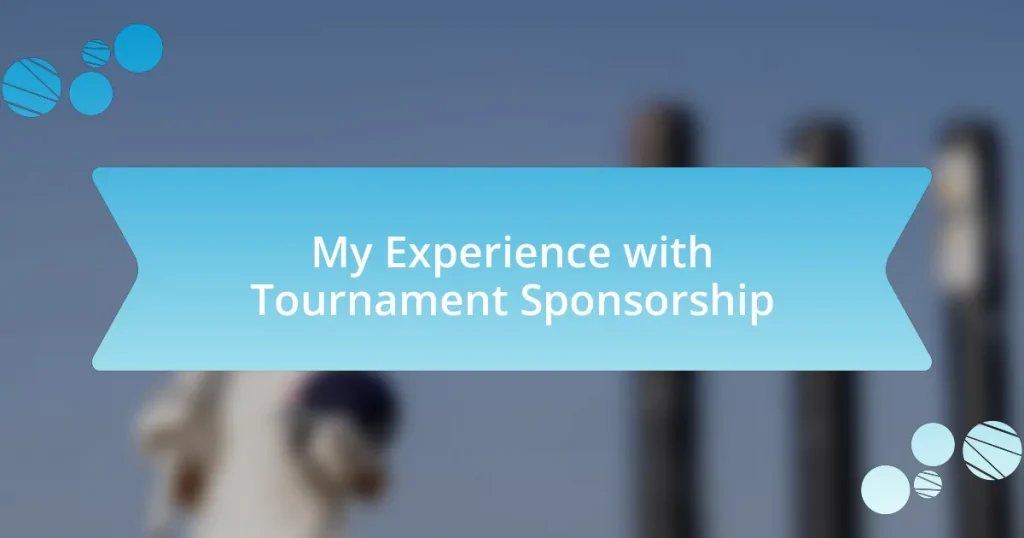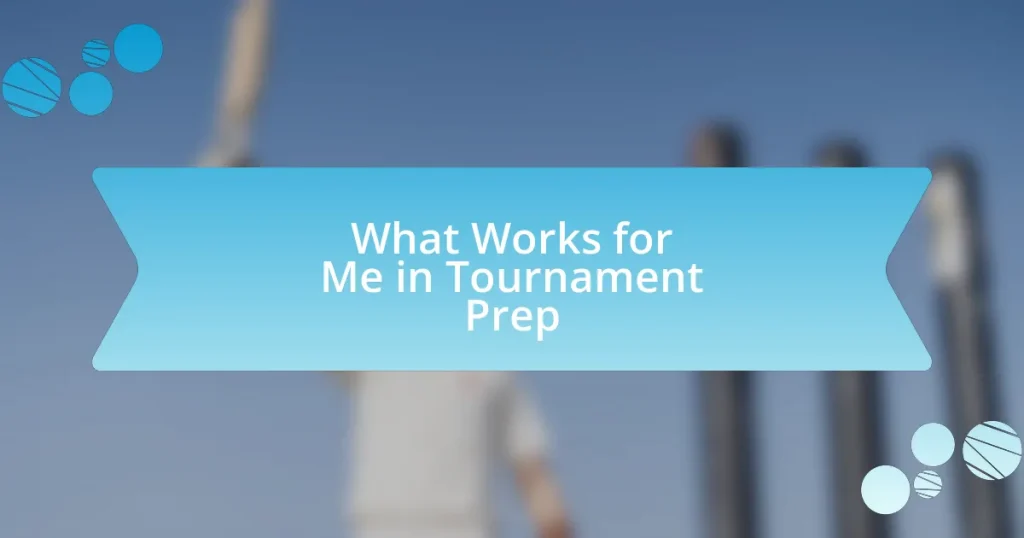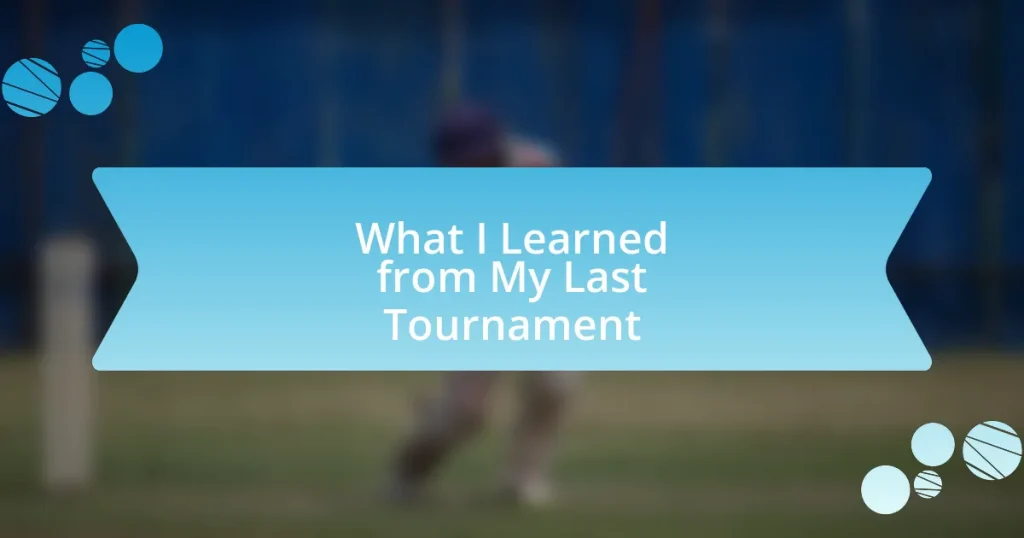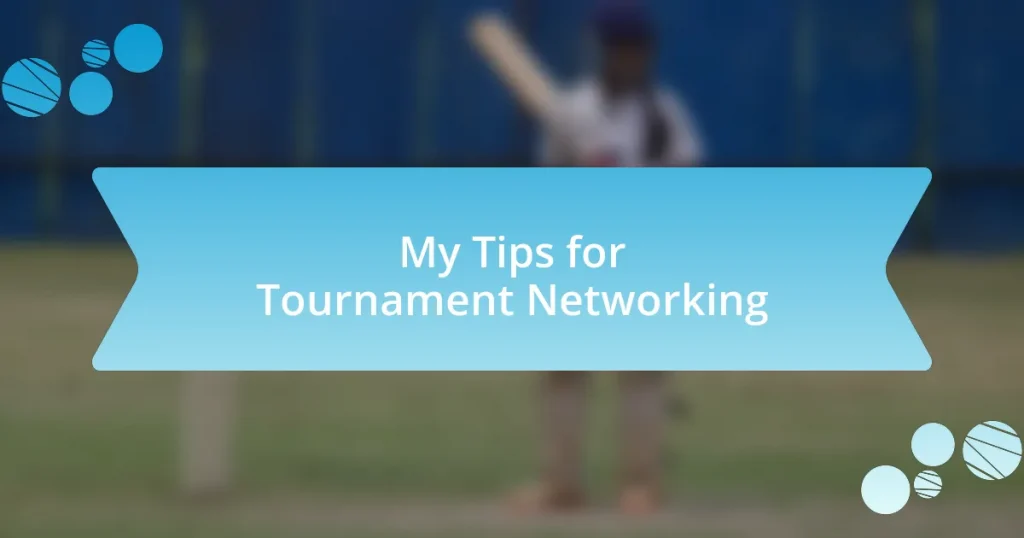Key takeaways:
- Tournament sponsorship fosters brand loyalty and emotional connections with audiences, leading to long-term customers.
- Choosing sponsors should focus on alignment of values, target audience overlap, and engagement strategies for authentic partnerships.
- Creating compelling proposals involves highlighting unique event aspects, providing clear benefits, and leveraging storytelling to connect emotionally.
- Measuring sponsorship success goes beyond financial metrics; engaging directly with attendees and tracking long-term sponsor relationships is vital.
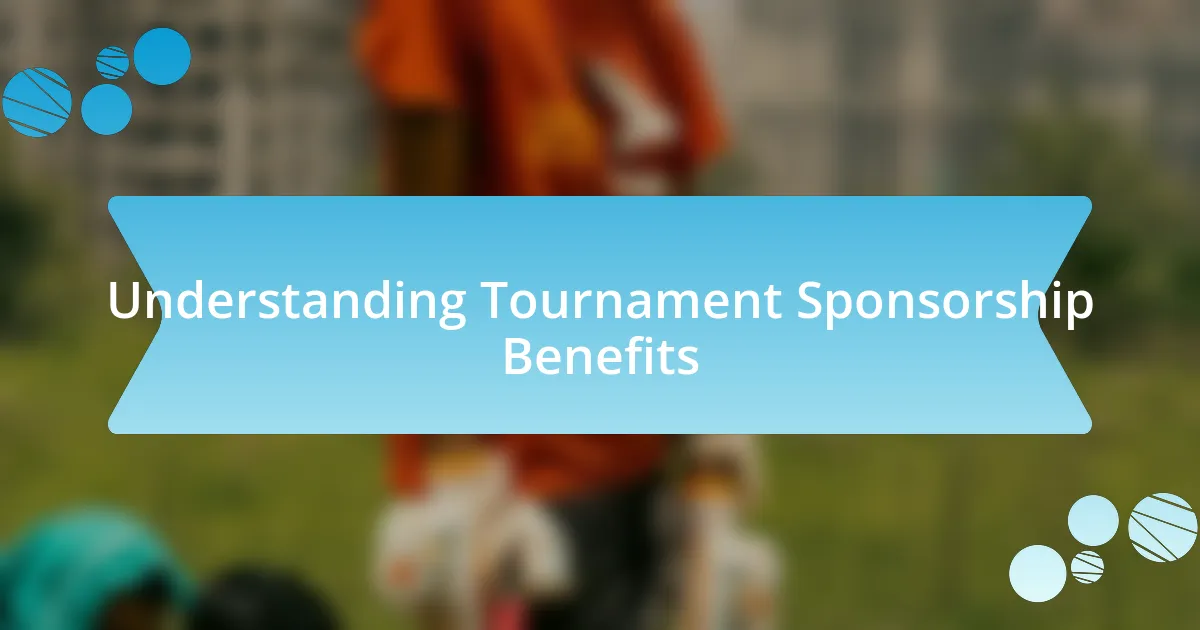
Understanding Tournament Sponsorship Benefits
Understanding the benefits of tournament sponsorship can transform how brands connect with their target audiences. I remember my first experience as a sponsor at a local sports event; seeing my brand logo on jerseys gave me a rush. It wasn’t just about visibility; it was about being part of a community and supporting something bigger.
One of the most significant advantages I’ve noticed is the ability to build brand loyalty. When fans see a brand consistently supporting their favorite teams or events, they develop a sense of loyalty that can be hard to shake. Have you ever felt that way about a brand that sponsored your favorite tournament? That emotional connection often translates into long-term customers.
Additionally, sponsorship offers valuable networking opportunities. I’ve met many potential clients and partners in casual settings at these events, which made follow-up conversations feel more relaxed and natural. It’s fascinating to think about how a simple sponsorship can lead to meaningful professional relationships. Isn’t it compelling how each interaction can create lasting business impacts?
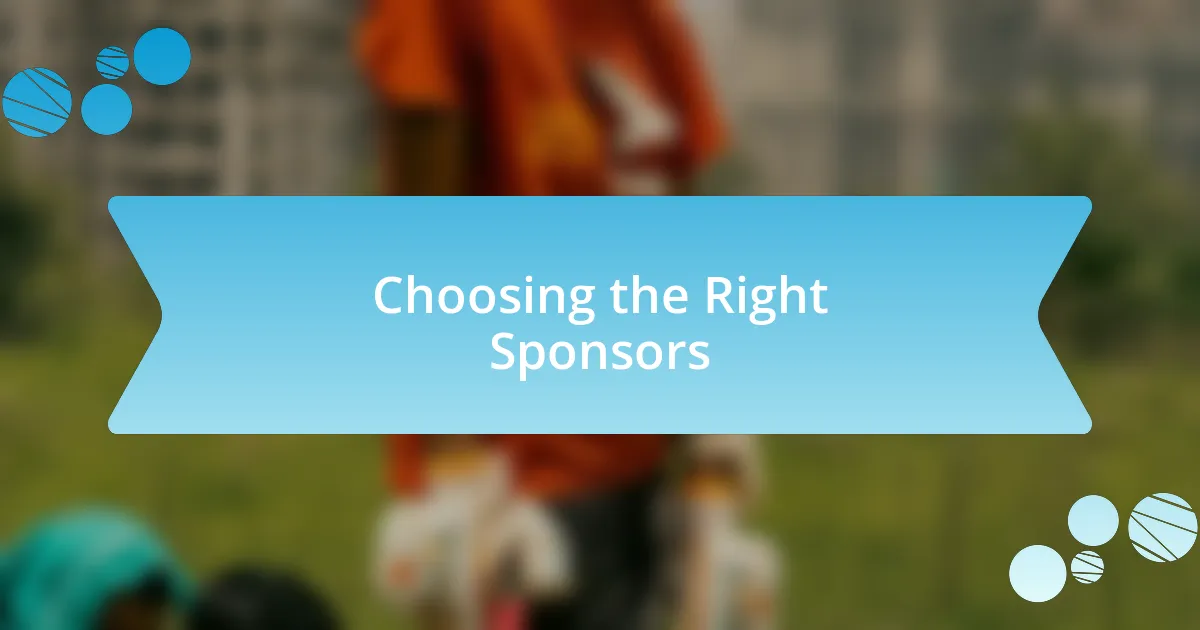
Choosing the Right Sponsors
Choosing the right sponsors can significantly influence the success of a tournament. In my experience, alignment between a sponsor’s values and the event’s mission is crucial. For instance, when I partnered with a health-conscious brand for a wellness tournament, it resonated with the audience, creating a buzz that benefitted us both. It reinforced my understanding that synergy is essential for authentic connections.
When considering potential sponsors, evaluate them through these lenses:
- Brand Alignment: Ensure their mission and values resonate with your audience.
- Target Audience: Analyze if their audience overlaps with your participants or attendees.
- Engagement Strategy: Look for sponsors that actively seek to engage with your community, not just display their logo.
- Reputation: Research how they interact with their customers and the larger community; a strong reputation fosters trust.
- Previous Sponsorships: Check their past involvement to gauge their commitment to meaningful partnerships.
These criteria have shaped my approach to selecting sponsors, making each partnership feel more like a collaboration rather than just a transaction.
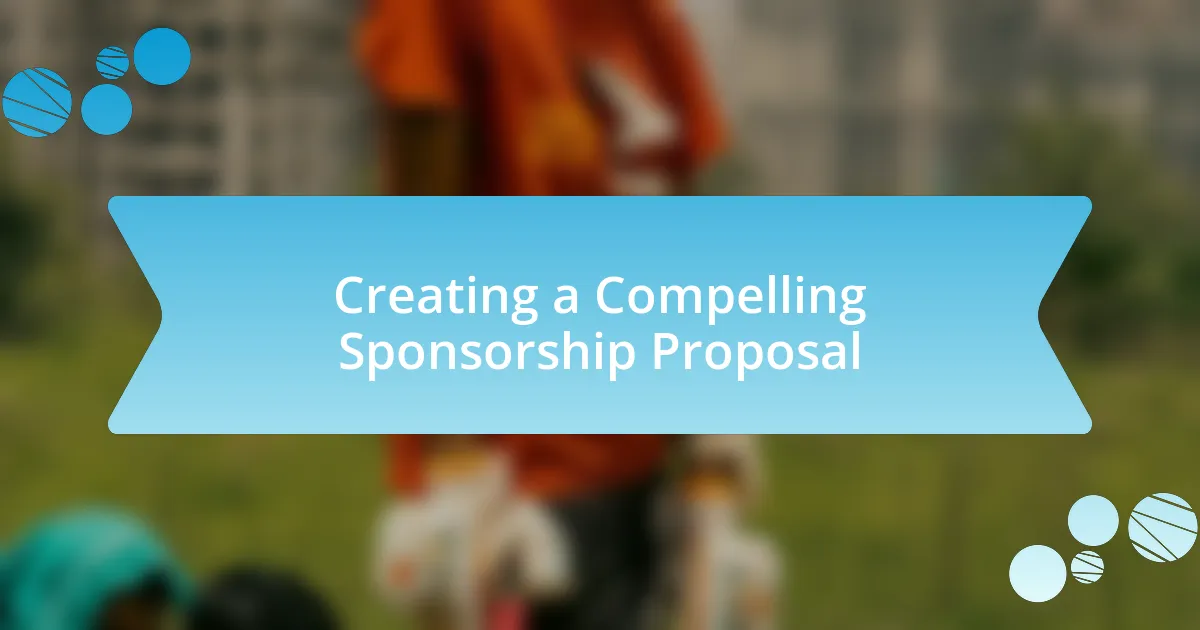
Creating a Compelling Sponsorship Proposal
Creating a compelling sponsorship proposal is crucial for attracting the right partners to your tournament. When I drafted my first proposal, I tailored it to reflect the unique aspects of my event, highlighting not just the attendees, but the emotional experience my tournament offered. It helped me convey a sense of community, making potential sponsors feel like they were becoming part of something bigger.
One key element I learned is the importance of clear, tangible benefits for sponsors. For example, by presenting detailed data on expected attendance and promotional reach, I demonstrated the value of their investment. In my experience, using visuals and statistics not only strengthens your case, but also helps sponsors visualize their potential impact, which is a game changer in any proposal.
Lastly, storytelling can elevate your proposal from average to exceptional. I remember including a heartfelt narrative about a sponsor’s previous support and how it enabled a local team to achieve their dreams. This personal touch resonated with decision-makers, often leading to a deeper connection and commitment. Sharing a genuine story can be the difference that persuades sponsors to come on board.
| Element | Importance |
|---|---|
| Tailored Content | Reflects event’s unique aspects and emotional experience |
| Tangible Benefits | Shows sponsors clear ROI through data and visuals |
| Storytelling | Creates emotional connection and emphasizes community impact |
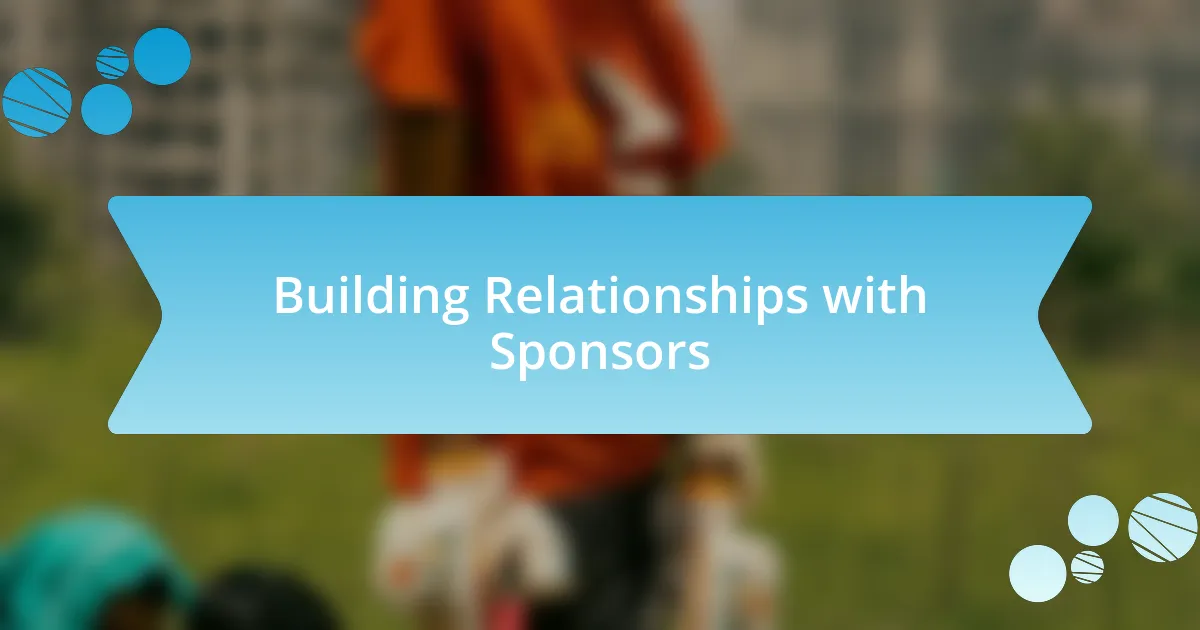
Building Relationships with Sponsors
Building relationships with sponsors goes beyond just signing a contract; it’s about nurturing a partnership. In my own experience, I scheduled regular check-ins with sponsors throughout the tournament planning process. These casual conversations weren’t just about logistics; they allowed us to share updates and celebrate milestones together, fostering a sense of camaraderie.
One of my favorite memories was the first time I invited a sponsor to attend the tournament. Watching them engage with the attendees, hearing their laughter, and seeing their positive reactions made me realize how vital it is for sponsors to experience the event firsthand. This opportunity not only reinforced our bond but also opened the door to more creative collaborations down the line. Engage your sponsors; they want to feel invested in your event.
Trust is a cornerstone of any successful sponsorship relationship. I’ve learned that being transparent about challenges and triumphs builds credibility. When I faced unexpected hurdles, such as a last-minute venue change, I reached out to my sponsors with honesty and resolved concerns together. This openness strengthened our partnership and resulted in their unwavering support. It begs the question: how can we create open lines of communication that invite sponsors into our journey? By making them feel like partners, we can cultivate lasting and fruitful relationships.
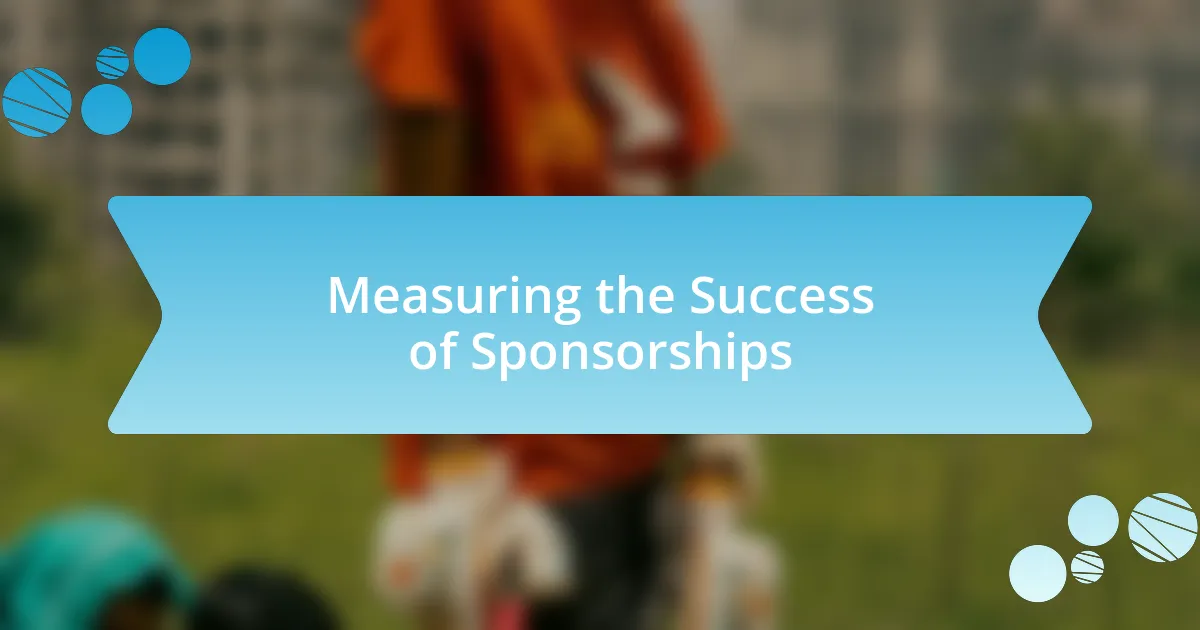
Measuring the Success of Sponsorships
Measuring the success of sponsorships is often more complex than just looking at financial metrics. I’ve found that one crucial method is evaluating the level of engagement from both the sponsors and the attendees during the event. For instance, after one tournament, I analyzed social media activity and found that sponsor posts generated a huge wave of interaction. This not only boosted their visibility but also confirmed that our partnership was resonating with the audience.
Another aspect that has proven valuable in my experience is gathering feedback directly from attendees and sponsors post-event. I’ve personally sent out surveys, and the responses often shine a light on unexpected areas of success, such as brand recognition or perceived value. Hearing sponsors express excitement about the positive impressions they made feels incredibly rewarding and shows that they genuinely appreciate the partnership’s impact.
Lastly, I’ve learned to track the long-term benefits of sponsorships beyond the tournament. Many sponsors returned for subsequent events, which indicated a successful collaboration. Their willingness to invest again suggests that they found value in our previous projects. This begs the question: are we looking at sponsorships purely through a one-event lens, or are we considering potential long-term partnerships? Understanding this can significantly change how we approach measuring success.
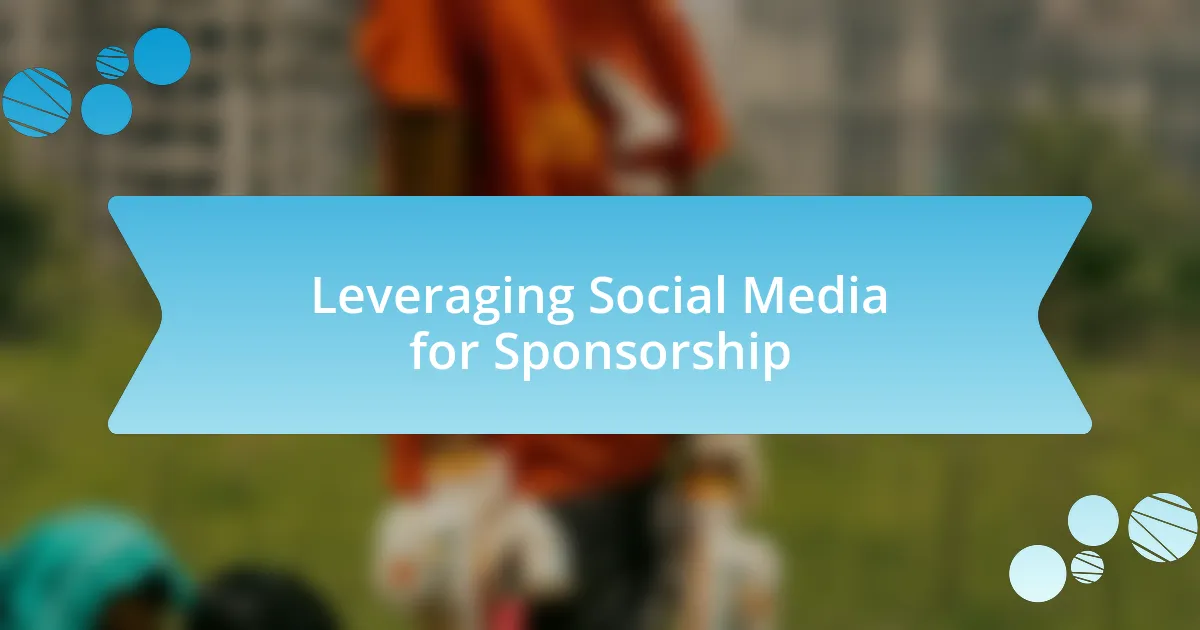
Leveraging Social Media for Sponsorship
When it comes to leveraging social media for sponsorships, I’ve found it can be a game-changer. I remember one tournament where we created a dedicated hashtag that not only highlighted our sponsors but also encouraged attendees to share their experiences in real-time. The result? A surge of user-generated content that not only amplified our sponsors’ messages but also fostered a sense of community among participants.
Engaging sponsors on platforms like Instagram and Twitter has opened doors I never anticipated. I once collaborated with a sponsor to run a contest where followers could win tournament tickets by sharing posts and tagging friends. The excitement that brewed online was palpable, and after the contest, the sponsors’ follower count soared while simultaneously elevating the tournament’s visibility. It made me realize how partnership can thrive when we tap into the interactive potential of social media.
Reflecting on my experiences, I often ask myself: how can we make our sponsors feel genuinely part of the event beyond monetary support? One effective strategy I’ve implemented is spotlighting sponsors through behind-the-scenes content and interviews before the event. This not only humanizes the brand but also builds anticipation for attendees, fostering a stronger connection between the sponsor and the fans. After all, who doesn’t appreciate feeling like they know the faces behind the brands they support?
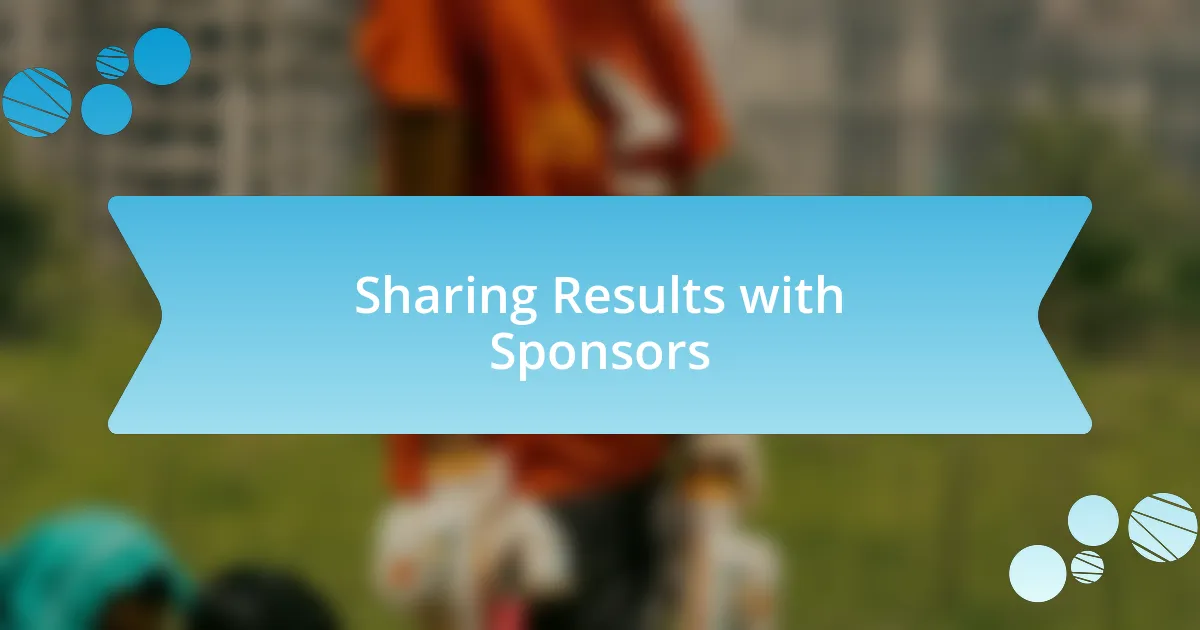
Sharing Results with Sponsors
Nothing feels better than wrapping up a tournament and showing sponsors just how impactful their investment has been. After one particular event, I shared a detailed report with our sponsors that included engagement metrics, media reach, and participant feedback. Their enthusiasm was tangible, and I could see how thrilled they were to understand the direct results of their support.
In another instance, I remember crafting a simple yet effective infographic summarizing the event outcomes, which I personally sent to each sponsor. It painted a clear picture of the value they received, including brand exposure and engagement rates. Their responses were overwhelmingly positive, often leading to discussions about future collaborations. Who wouldn’t feel motivated to continue working together when they see their brand’s impact in such a clear and compelling way?
Sometimes, I wonder how much impact a personal follow-up can have. After one tournament, I took the time to call every sponsor, discussing not just data but also sharing heartfelt stories from attendees about their experiences. This one-on-one connection felt invaluable; I could sense their commitment to the event deepen. It’s reminders like these that show sponsors they’re more than just financial contributors—they’re an integral part of a vibrant community.










